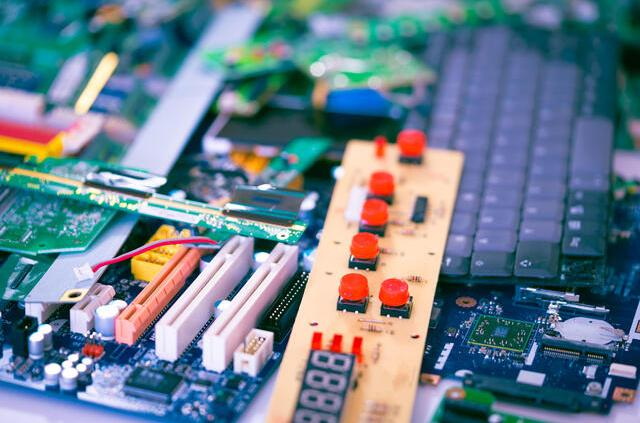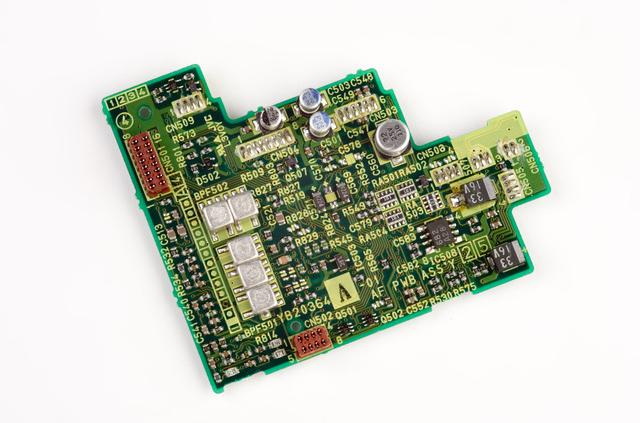Content Menu
● Understanding Automated SMT Lines
>> Key Components of Automated SMT Lines
● Cost Reduction Mechanisms of Automated SMT Lines
>> 1. Increased Production Efficiency
>> 2. Labor Cost Savings
>> 3. Improved Quality Control
>> 4. Material Waste Reduction
>> 5. Enhanced Flexibility and Scalability
● Case Studies Demonstrating Cost Reductions
● Future Trends in Automated SMT Lines
● Challenges and Considerations
● Conclusion
● FAQ
>> 1. What are the main advantages of using an automated SMT line?
>> 2. How does automation impact labor requirements?
>> 3. What types of equipment are commonly found in automated SMT lines?
>> 4. Are there any challenges associated with implementing automated SMT lines?
>> 5. Can companies easily scale their operations with automated SMT lines?
In the rapidly evolving landscape of electronics manufacturing, companies are continually seeking ways to enhance efficiency and reduce costs. One of the most significant advancements in this field is the implementation of automated Surface Mount Technology (SMT) lines. These automated systems have revolutionized the way electronic components are assembled, leading to substantial cost savings and improved production rates. This article explores how automated SMT lines can reduce manufacturing costs, examining their operational efficiencies, reduced labor requirements, and enhanced quality control.

Understanding Automated SMT Lines
Automated SMT lines are specialized production systems designed for the assembly of electronic components onto printed circuit boards (PCBs). These lines utilize advanced machinery and robotics to perform tasks such as component placement, soldering, and inspection. The integration of automation in SMT processes has transformed traditional manufacturing practices, enabling faster production cycles and higher output levels.
Key Components of Automated SMT Lines
1. Pick-and-Place Machines: These machines are responsible for accurately placing electronic components onto PCBs. They utilize vision systems to ensure precise alignment and placement.
2. Soldering Equipment: Automated soldering systems, including reflow ovens and wave soldering machines, ensure that components are securely attached to the PCB.
3. Inspection Systems: Automated optical inspection (AOI) systems monitor the assembly process, identifying defects in real-time to maintain high-quality standards.
4. Conveyor Systems: These systems facilitate the movement of PCBs through various stages of production, ensuring a smooth workflow.
5. Software Solutions: Advanced software is used for programming machines, monitoring production metrics, and managing inventory.
Cost Reduction Mechanisms of Automated SMT Lines
Automated SMT lines contribute to cost reduction through several mechanisms:
1. Increased Production Efficiency
Automated systems significantly enhance production efficiency by operating at higher speeds than manual processes. The ability to run continuously without breaks allows manufacturers to increase output without proportionally increasing costs.
- Faster Cycle Times: Automation reduces cycle times for each assembly process, allowing more units to be produced in a given timeframe. For instance, while manual assembly might take several minutes per unit, an automated line can reduce this to seconds.
- 24/7 Operation: Automated lines can operate around the clock with minimal downtime for maintenance, maximizing production capacity. This capability is particularly advantageous in industries with high demand fluctuations.
2. Labor Cost Savings
One of the most immediate impacts of automation is the reduction in labor costs.
- Reduced Workforce Requirements: Automated SMT lines require fewer operators compared to manual assembly lines. This reduction leads to lower payroll expenses and associated costs such as benefits and training.
- Higher Skill Utilization: With less need for manual labor, companies can focus their human resources on higher-skilled positions such as engineering and quality assurance. This shift not only enhances job satisfaction but also encourages innovation within the workforce.
3. Improved Quality Control
Quality control is paramount in electronics manufacturing, where defects can lead to costly recalls and repairs.
- Consistent Quality: Automated systems provide consistent performance with minimal variation, reducing the likelihood of human error that can occur in manual processes. This consistency is crucial in maintaining brand reputation and customer satisfaction.
- Real-Time Inspection: The integration of AOI systems allows for immediate detection of defects, enabling quick corrective actions before products proceed further down the line. This proactive approach minimizes waste and rework costs associated with defective products.
4. Material Waste Reduction
Automated SMT lines help minimize material waste through precise handling and placement techniques.
- Accurate Component Placement: Automated pick-and-place machines ensure that components are placed correctly, reducing the risk of damage during assembly. Misplaced components can lead to costly repairs or scrapping of entire batches.
- Optimized Soldering Processes: Advanced soldering technologies minimize excess solder use, leading to lower material costs. Efficient soldering not only saves materials but also improves thermal conductivity and reliability in electronic assemblies.

5. Enhanced Flexibility and Scalability
Automated SMT lines offer manufacturers greater flexibility in adapting to changing market demands.
- Quick Changeovers: Many automated systems allow for rapid changeovers between different products or configurations, reducing downtime during transitions. This adaptability is critical in industries where product life cycles are short or where customization is key.
- Scalable Production: As demand increases, manufacturers can easily scale up operations by adding additional machines or expanding existing lines without significant restructuring. This scalability ensures that companies can respond swiftly to market opportunities without incurring excessive costs.
Case Studies Demonstrating Cost Reductions
Several companies have successfully implemented automated SMT lines with notable cost reductions:
- Company A: After transitioning from manual assembly to an automated SMT line, Company A reported a 30% increase in production capacity while reducing labor costs by 25%. The implementation of AOI systems also led to a 15% decrease in defects, significantly enhancing product reliability.
- Company B: By investing in automated pick-and-place technology, Company B was able to cut its material wastage by 20%, resulting in significant savings on component procurement costs. Furthermore, they noted an increase in customer satisfaction due to improved product quality.
- Company C: A leading electronics manufacturer adopted a fully automated SMT line that allowed them to produce complex multi-layer PCBs at unprecedented speeds. They achieved a return on investment within two years due to reduced labor costs and increased output efficiency.
Future Trends in Automated SMT Lines
As technology continues to advance, several trends are emerging that will further enhance the capabilities of automated SMT lines:
- Artificial Intelligence Integration: The use of AI algorithms can optimize machine learning processes within automated lines, allowing for predictive maintenance and real-time adjustments based on production data analysis.
- IoT Connectivity: The Internet of Things (IoT) enables machines on the SMT line to communicate with each other and with central management systems. This connectivity allows for better monitoring of equipment health and performance metrics.
- Advanced Robotics: Innovations in robotics will lead to more versatile machines capable of handling a wider variety of components and configurations without extensive reprogramming or downtime.
Challenges and Considerations
While the benefits of automated SMT lines are substantial, companies must also consider potential challenges:
1. Initial Investment Costs: The upfront costs associated with purchasing and installing automated equipment can be significant. Companies must conduct thorough cost-benefit analyses to justify these investments against potential savings over time.
2. Training Requirements: Employees may require training to operate new machinery effectively and understand software solutions that accompany automation. Investing in training programs ensures that staff can maximize the benefits of new technologies.
3. Maintenance Costs: Regular maintenance is essential for automated systems to function optimally. Companies should factor in these ongoing costs when assessing overall savings; neglecting maintenance can lead to costly breakdowns that negate efficiency gains.
4. Integration with Existing Systems: Transitioning from manual processes to automation may pose challenges related to integrating new technologies with existing production workflows. Careful planning is required to ensure seamless integration without disrupting ongoing operations.
5. Market Demand Variability: Fluctuations in market demand may affect the viability of large-scale automation investments if not carefully monitored and managed over time.
Conclusion
Automated SMT lines represent a transformative approach in electronics manufacturing that significantly reduces costs through enhanced efficiency, reduced labor requirements, improved quality control, minimized material waste, and increased flexibility. While initial investments may be high, the long-term savings and competitive advantages gained from automation make it a worthwhile consideration for manufacturers seeking to thrive in a competitive market landscape.
As technology continues to advance, we can expect further improvements in automated SMT line capabilities, ultimately leading to even greater cost reductions and efficiencies in manufacturing processes. Embracing automation not only positions companies favorably within their respective markets but also paves the way for innovation-driven growth in an increasingly digital world.

FAQ
1. What are the main advantages of using an automated SMT line?
The main advantages include increased production efficiency, reduced labor costs, improved quality control, minimized material waste, and enhanced flexibility in production processes.
2. How does automation impact labor requirements?
Automation reduces the need for manual labor by requiring fewer operators on the production line while allowing skilled workers to focus on more complex tasks such as engineering or quality assurance.
3. What types of equipment are commonly found in automated SMT lines?
Common equipment includes pick-and-place machines, soldering equipment (like reflow ovens), inspection systems (such as AOI), conveyor systems for workflow management, and software solutions for machine programming and monitoring.
4. Are there any challenges associated with implementing automated SMT lines?
Yes, challenges include high initial investment costs, training requirements for staff on new machinery and software solutions, ongoing maintenance costs for ensuring optimal operation of automated systems, integration issues with existing workflows, and managing market demand variability effectively.
5. Can companies easily scale their operations with automated SMT lines?
Yes, one of the key benefits of automated SMT lines is their scalability; manufacturers can quickly adjust production levels by adding machines or modifying existing setups based on market demand changes.




















